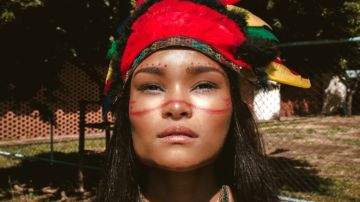Let’s Talk About the Real History of Thanksgiving
Most people of color in the United States realize that Thanksgiving is a wildly problematic celebration of the exploitation and genocide of native peoples

Photo by Marcus Pinho
Most people of color in the United States realize that Thanksgiving is a wildly problematic celebration of the exploitation and genocide of native peoples. Yet, many of us still celebrate it. For lots of people of color, Thanksgiving is less a celebration of pilgrims and more a celebration of family and gratitude. But we would be seriously remiss if we don’t also take a moment to acknowledge the hundreds of years of struggles that the indigenous populations of the Americas have faced since the moment the first colonizer stepped foot on native land.
The real history of the murder, enslavement, and eventual displacement of hundreds of thousands of Native Americans is not something we are taught in school. It is infuriating that the narrative spun to our most impressionable population is so sugar-coated. Some of us may still pretend it’s acceptable to co-opt indigenous culture as a costume, dressing children in sacred headdresses that should be exclusively reserved for Native Americans, but most of us know better.
Young children may not be able to fully understand what went down at the start of our nation and the horror that this country was built on. But no one is too little to know that the Pilgrims were not very kind to the Native Americans and that even though the Natives shared and tried to help them, the Pilgrims decided to take everything for themselves and be mean. See how easy that was to put into language even a child could understand?
It’s the total dedication to the white-washing and sanitation of our history that has kept us from making real progress in the country. That willful ignorance leads us to declarations like a “post-racial” America after President Obama’s election. Instead of pretending everything about Thanksgiving is celebratory, let’s take the chance to learn and face up to the real history of the holiday. The very first was celebrated in Berkley Bay, Virginia, when a shipload of colonizers arrived from Europe on November 28, 1619, after having survived a particularly brutal two-and-a-half-month long journey. It was celebrated without much fanfare and definitely no decadent feast. They simply got down on their knees and prayed, giving thanks for their safe arrival.
The Thanksgiving day narrative we are taught about pilgrims and Plymouth Rock is based on the much darker history of the massacre of 700 Wampanoag tribe members in the Massachusetts Bay Colony in 1637. It was basically a celebration by Europeans of the successful conquering and murder of native peoples. It did not occur at Plymouth rock, and no pleasantries were exchanged between the colonizers and the Native Americans.
There are lots of ways to incorporate and acknowledge the pain of the Native peoples into time spent with family. Read up about the real history of the United States and discuss it, create a safe space for people of color to talk about the difficulties they are dealing with right now, or create care packages for Native peoples on reservations who have such limited resources (particularly the school children).
For people of color, existence is resistance, and any moment we have right now to capture and share joy with loved ones should be deeply appreciated and held sacred. Latinxs, in particular, share lots of history with indigenous populations, as so many of us are mixed/mestiza and have indigenous blood. I’m not telling you not to enjoy a shared meal with friends and family, I’m just saying that we should not allow the erasure of the real history of suffering behind this holiday. I am grateful that so many of us refuse to stay silent to the pain of those around us.

















